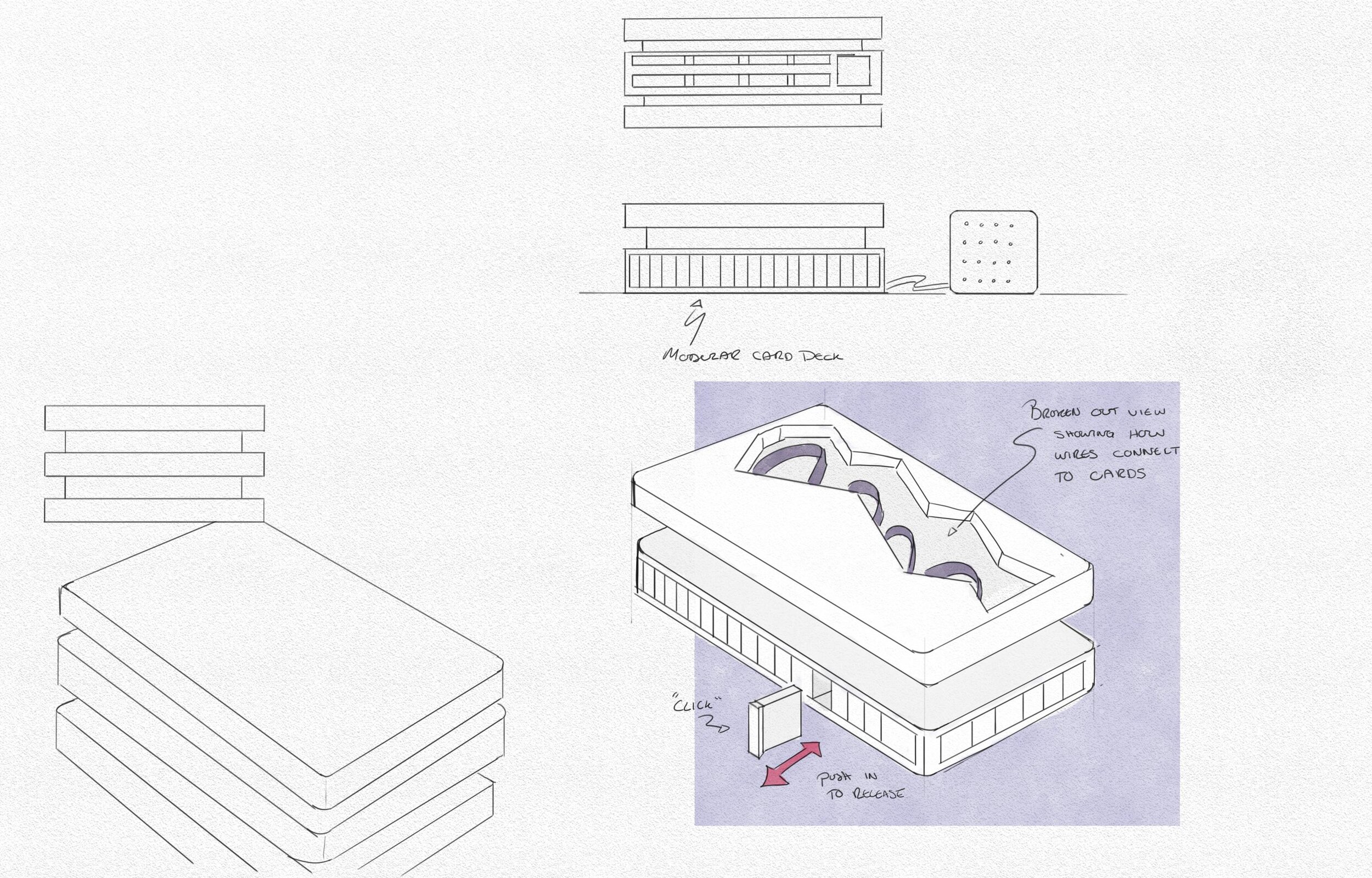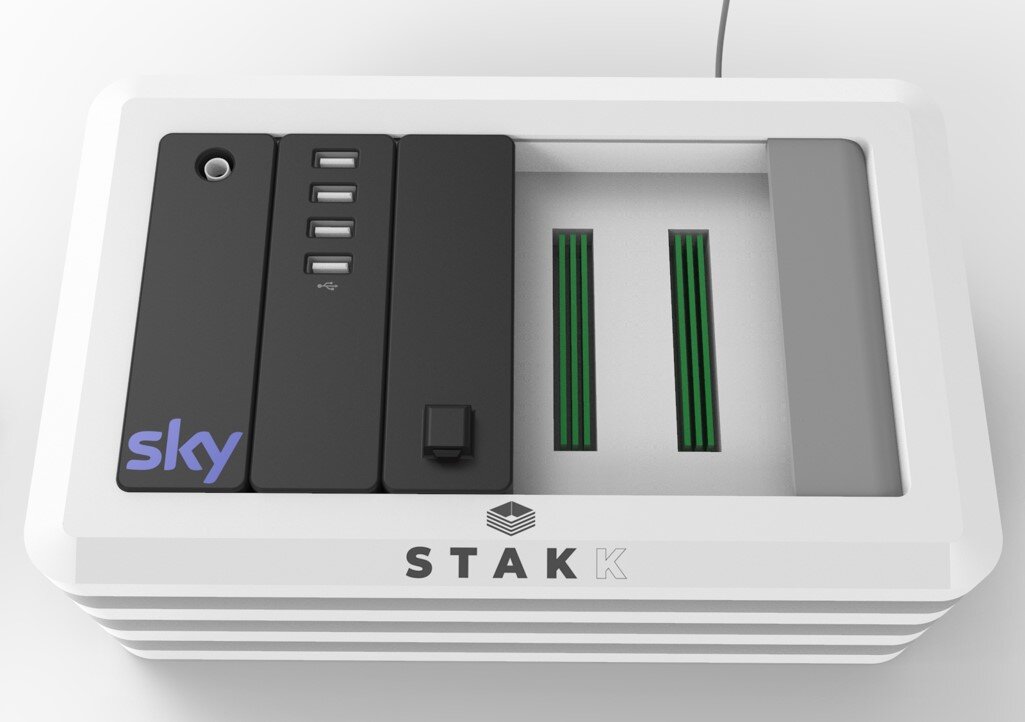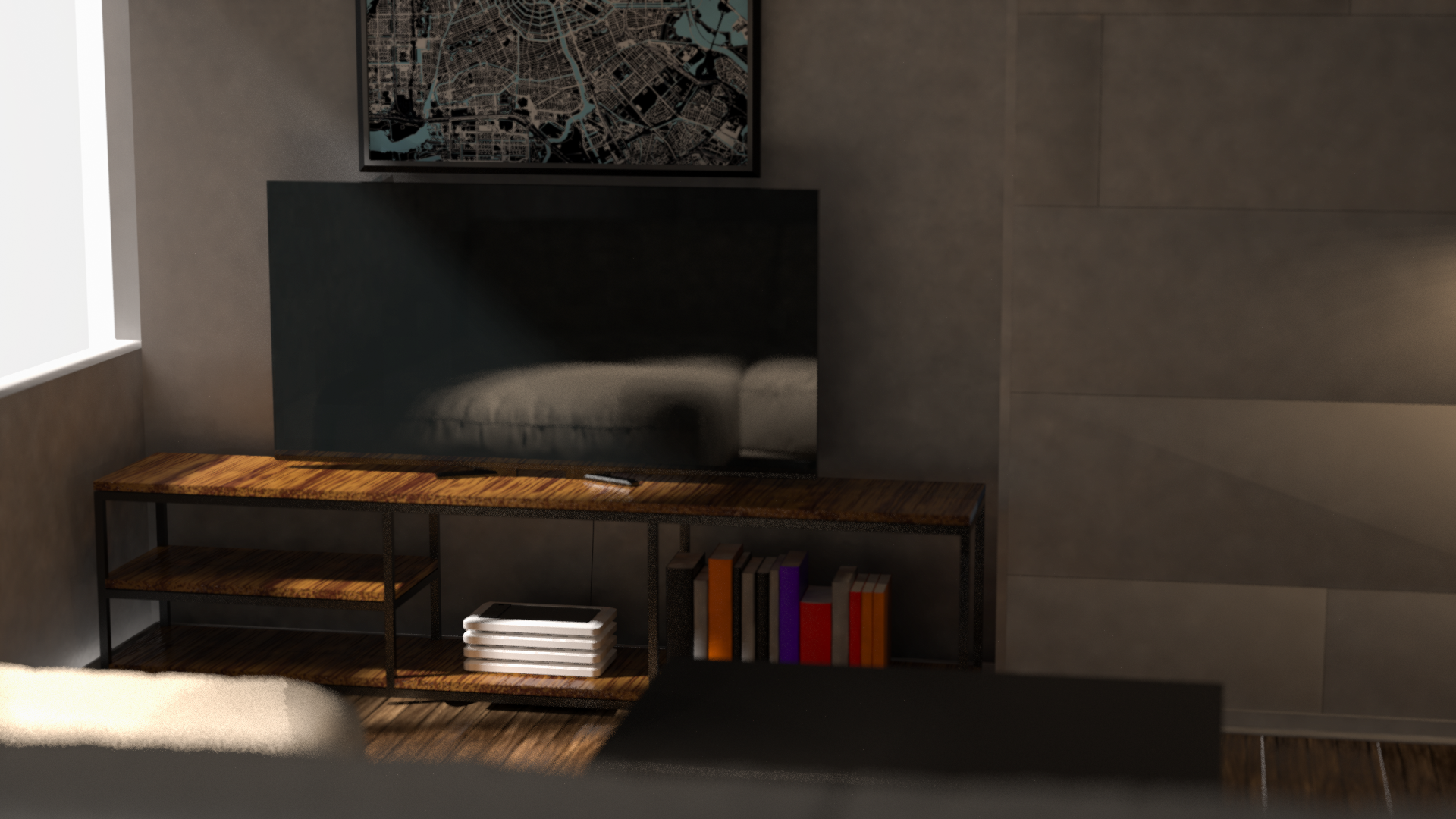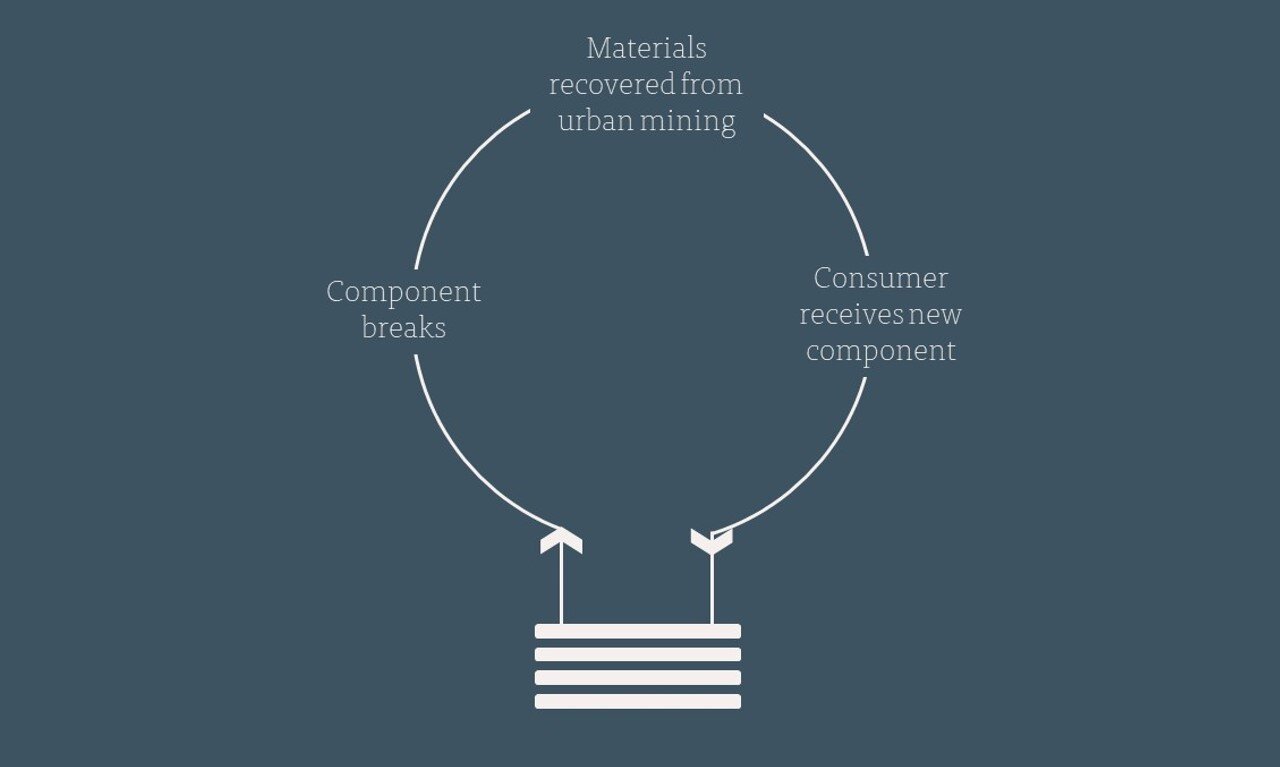Stakk
Stakk is a completely modular television system designed to fit within the circular economic model using cradle-to-cradle design principles, aiming to highlight what is possible when the full lifecycle of a product is considered. This was one of the most exciting projects I worked on at university, and it is what sparked my desire to try to design fully with circular principles in mind in every project I would work on in the future.
Scroll ↓
Project Summary
“A reimagining of what television could be for the circular economy.”
Project Type | University Team Project
Status | Complete
Year | 2021
-
1 month
-
Product Design
-
User Research / Ideation / Sketching / Rendering / Prototyping
“E-waste creation and recycling”
What is the problem right now?
Consumer electronics are a major source of global e-waste, with only 15-20% being recycled. In 2018, the amount of e-waste produced globally was approximately 49.8 million tonnes.
E-waste makes up 7% of all toxic waste and releases harmful toxins into the atmosphere when sent to landfills and burned. In 2020 alone, over 50 million tonnes of E-waste was produced.
As a result, we wanted to create a more circular product that could outlast the consumer by incorporating cradle-to-cradle design principles. So our team set out to create a future-proof product that moves away from built-in obsolescence.
Only 15 - 20% of electronics are recycled
Consumer electronics are a major source of e-waste
Make up 7% of all toxic waste, releasing toxins in the air
In 2018 50 million tonnes of e-waste was produced
Brief:
How might we redesign consumer electronic products so that valuable materials can be recovered and repurposed?
The lifespan of a product is almost always determined at the design stage, and it is out of the consumer’s control how long their product lasts. e.g., a TV is designed to last between 5-7 years; at that point, technology will have advanced, and the product will be outdated.
Research has shown that mining valuable metals from pre-used electronics is almost 3x as profitable compared to mining virgin materials from the ground.
This concept is called urban mining. Our idea was to use this concept of urban mining to create a more circular product that could hypothetically outlive the consumer.
Research indicated that most products that have a component break end up in landfills as consumers aren’t able to repair them, either themselves or at repair centres. This called for a new type of product to enter the market, one that was repairable and modular that could be disassembled at the end of its life.
Staying User Focused
Our product, which we named Stakk, is aimed at first-time buyers looking for a sustainable and customizable product that will grow with them as their income and living space expand. It is designed to be simple and fun to navigate, modify, and fix, with easily accessible components that anyone at any age can replace.
Concept Development
This was an exciting part of the process, where the team focused on a variety of ways in which we could make a television modular. From removable screens to easily disassembled components held together with screws. We focused on individual component “cards” that would allow the user to swap out individual pieces when they needed replacing. Reminiscent of placing a cartridge in an old GameBoy.
Ideation & Concept Generation









Aesthetic Direction & Narrative
The design aesthetic incorporated futurism and a timeless colour palette, signalling to the user that Stakk will be ready for the technology of tomorrow and never be out of place in the home.
Form and Finish exploration
To achieve this, the aesthetic and form were heavily influenced by existing consumer products that have lasted and remained popular regardless of their release date.
It’s focus on repairability and modularity sought to tell a story of independence and sustainability, highlighting how repairability and sustainability do not have to come at the cost of quality or cutting-edge technology.
Branding & Packaging
The Solution
The final design focused heavily on removable component “cards” slotted into the main body of Stakk, providing full customizability. All components are in a separate place from the screen, allowing it to be as thin as the OLED or LCD panel. Our product works on a system of redundant pins on a large universal connector, ensuring that every module connected to it is assigned the number of pins it requires, creating a star-shaped network that can significantly extend the lifespan of the overall product.













